Filmsite.com defines mise en scène as: “a French term for "staging," or "putting into the scene or shot"; in film theory, it refers to all the elements placed (by the director) before the camera and within the frame of the film -- including their visual arrangement and composition; elements include settings, decor, props, actors, costumes, makeup, lighting, performances, and character movements and positioning; lengthy, un-cut, unedited and uninterrupted sequences shot in real-time are often cited as examples of mise-en-scene…”
Setting
The setting focuses on the location of the scene (i.e. the place where the action happens), which includes the landscape, architecture and the interior design. The setting also included décor and other objects—the additional props. The filmmaker may at times use natural settings, and at other times they may build custom made “constructed sets.” When a film is shot at a specific place—for instance the Korean drama Iris had scenes in Turkey—we refer to it as “shot on location.” The location they are depicting is Turkey, and the film was shot in Turkey, so it was “shot on location.” In more recent films blue / green screens are used onto which a CGI-background is superimposed. CGI is the abbreviation for computer generated imagery.
Pramaggiore & Wallis (60) highlights the value of setting in the following quote: “The visual characteristics of a setting evoke responses from the audience. Do events take place inside buildings or outside? Are settings living spaces, work places, or public places? Are they spacious or cramped, sunny and bright, or dim and shadowy? Are they full of bits and pieces or empty?”
Each one of these settings will create a different mood. Setting also establish the time and place in which the action occurs. More abstract information such as themes and motifs can also be conveyed through the setting.
The Human Figure
The actor, as primary agent, forms a very important part of the scene. Each actor has a different look and “feel” about them. Their appearance and acting styles will bring a unique quality to each scene. Add to this the costumes worn by the actors, the make-up used, as well as props placed in each scene, and you may get an idea of the value that a person brings to the scene.
The character’s body can, in a way, become a “prop” too. In some scenes character’s are directed to position themselves in specific postures and placements within a shot, for specific dramatic effect. Look at the following pictures. What is the feeling or meaning conveyed? Especially consider the positioning of the actors’ bodies.
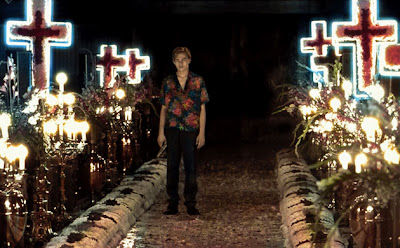
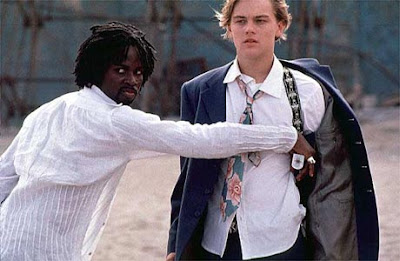
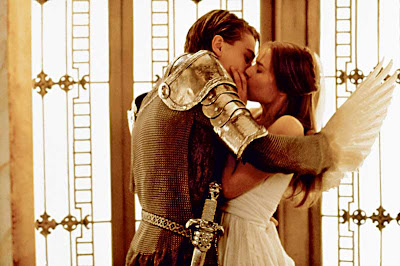

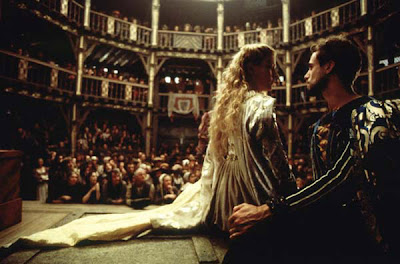
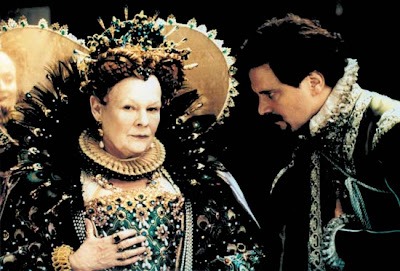
Lighting
Another element that contributes to the mise en scène is the lighting. Lighting can be described according to its quality (hard or soft), it’s placement (the direction from which it shines on objects), and the contrast it creates (high or low contrast).
Look at the following screen shots and consider the lighting’s quality, placement, and contrast. Why do you think the filmmakers chose that specific lighting? What are the moods that are achieved?
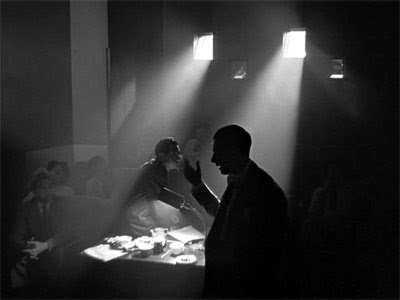
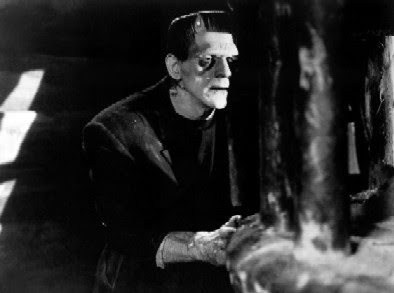
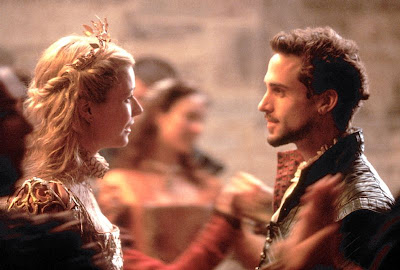
Composition
Composition is another important aspect of mise en scène which we will discuss later in more detail. In the meanwhile, thing of composition as the "balance" of each frame. Many things contribute to the composition, such as straight and diagonal lines, the foreground and background, the use of light and dark, as well as the artistic use of colour.
